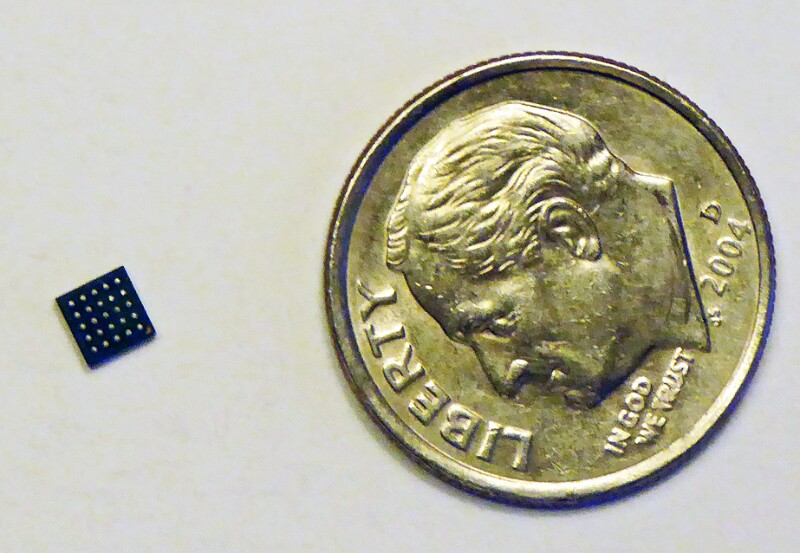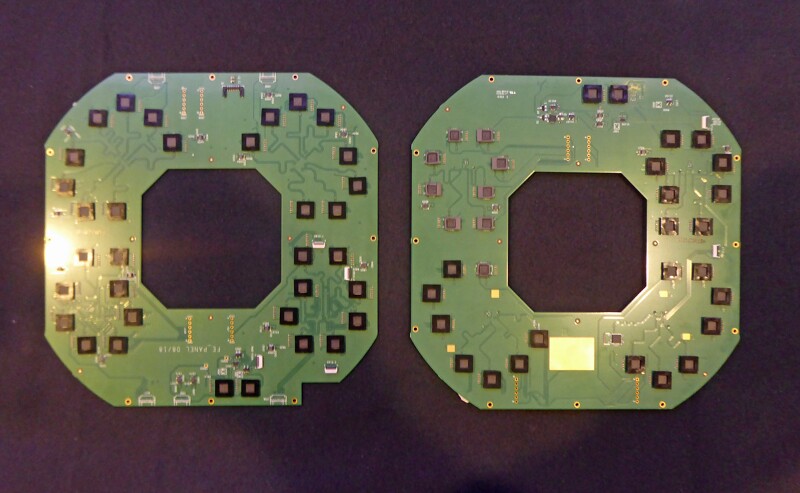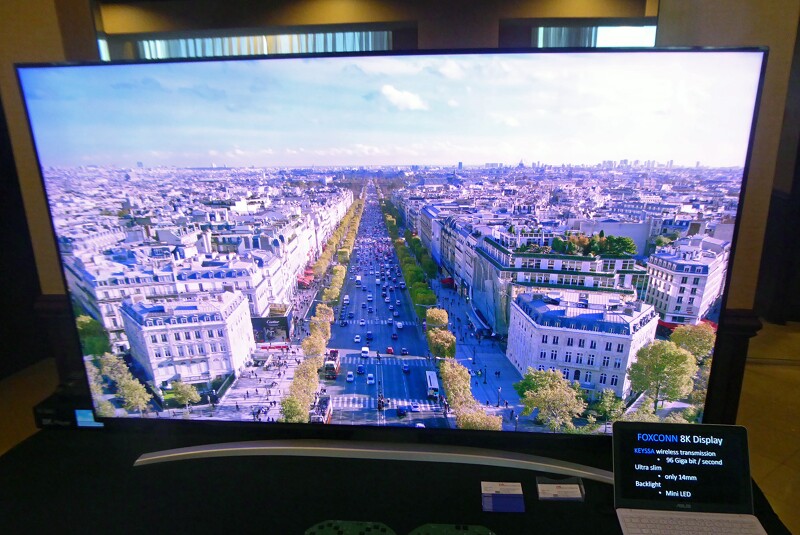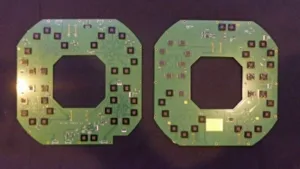I’ve been following high-bandwidth millimeter-wave wireless for well over a decade now and it never seems to get off the ground.

There have been numerous demonstrations of 60 GHz HDMI transmitter and receiver kits at trade shows and more than a few products have come to market, only to languish on distributor’s shelves due to high cost, consumer ignorance, and general disinterest.
This year at CES, it seemed like some momentum was finally building, specifically with millimeter-wave technology for displays and data. Two companies in the Westgate Hotel and a big name on the show floor exhibited some clever applications for low-latency 60 GHz connectivity, and their approaches couldn’t be more different.
Keyssa, a Campbell, California-based startup whose founder originally was part of Silicon Image, has been doing extensive work with near-field, high-bandwidth wireless links. The technology was known as Kiss in recent years and allows for up to 6 Gb/s of half-duplex transmission when transceivers are brought into close proximity (say, about 10mm) or linked via short plastic waveguides.
 Keyssa Microchip and Dime Image: Pete Putman
Keyssa Microchip and Dime Image: Pete Putman
At CES, Keyssa showed a cool way to install and swap out LED wall tiles, using magnets and 60 GHz links. Simply pop off the bad tile and snap the new one in its place, with near-instant display connectivity. (Power is taken through a separate set of pins.) They’ve also figured out a way for a TX-RX link to work even when the transmitter and receiver are not perfectly aligned by using circular polarization for the antennas.
 Keyssa 8K Wireless Interface Boards – Image: Pete Putman
Keyssa 8K Wireless Interface Boards – Image: Pete Putman
Keyssa had previously shown a tablet dock connected to a larger TV for streaming video and that demo was repeated this year. Simply place a tablet in the dock and within a second or two, video is streaming to the larger display with just a tad of latency. The per-lane cap of 6 Gb/s is easily overcome by adding more lanes.
 Keyssa 60 Ghz Wireless 8K TV Demo Image: Pete Putman
Keyssa 60 Ghz Wireless 8K TV Demo Image: Pete Putman
To prove this point, there was one additional demonstration of 8K HDR video content streaming at 96 Gb/s (yes, you read that right) to a large 8K TV. The connection was made through the back of the TV into the mounting bracket, using PCBs with 32 separate TX-RX links streaming at 3 Gb/s each. The concept is for a large 8K TV to sit in a cradle-like bracket, free of wires (power could be wirelessly coupled as well).
A few floors up from Keyssa, Peraso had some 60 GHz tricks up its sleeve. This Toronto-based fabless semiconductor manufacturer has been tinkering with millimeter-wave tech for several years with a concentration on high-speed wireless USB and 802.11ad WiFi products.
At this frequency, signals cannot pass through solid objects like walls and people, although they can “bounce” off them. And the wavelengths are so short (about .05 inches) that implementing beam steering is a piece of cake. This trick allows more than one TX-RX link on the same channel with zero interference between transmissions. And of course, 60 GHz links provide a high level of security as it would be almost impossible to “hack” the transmission, unless you were in the room and positioned between the transmitter and receiver.
I was shown a 60 GHz wireless access point with tri-band operation (2.4, 5, and 60 GHz). This product is coming to market and its key feature is creating high-speed data links. With six 2 GHz channels available, you can expect that data rates would be pretty high. Tri-band WAPs aren’t a new idea – over a dozen tri-band modem/WAP prototypes were teased at CES a couple of years ago – but this is the first product that you can actually buy.
Wireless USB-C is another application with lots of potential. A demo of a file download from one PC to another showed an average data rate exceeding 200 Mb/s – twice the speed at which an Ultra HD Blu-ray disc plays back 4K content with high dynamic range. The additional capacity provided by 2 GHz channels (100x the size of channels at 2.4 and 5 Ghz) meant that this high-speed file-swapping could take place in the background while a 4K movie was streaming over the same link without a hiccup.
60 GHz wireless also got a boost from Qualcomm, which was demoing a cool 802.11ad application in its Central Hall booth – high-speed wireless gaming with near-zero latency from a pair of smartphones to a pair of Ultra HDTVs. There have been demos of 60G within phones at previous shows, but none worked as well as this one. And if Qualcomm is behind a new technology, you know it is getting ready for prime time…

